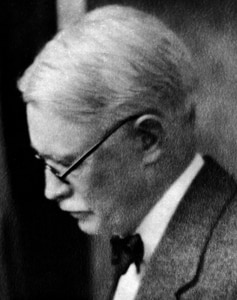Applewood Manor (originally the home of Army Captain John Adams Perry) was designed and built in 1912 by Asheville’s leading architect at the time, William H. Lord.
William Henry Lord (1864-1933), a native of Syracuse, New York, came to Asheville in 1899 and emerged as one of the most important architects in the city during the early twentieth century as well as a leader in the development of the architectural profession in the state. He and his wife, Helen Anthony of Poughkeepsie, New York, had decided to make their home in Asheville, a growing railroad and resort community at that time.

Lord was trained in the classical styles and though best known for his commercial work, his early work in Asheville consisted primarily of houses in the Montford neighborhood, including his own, which incorporated elements of the Colonial Revival and Shingle styles. The Perry home that later became Applewood Manor is quintessential Lord—Colonial Revival. But in the case of Applewood, he gives the Federal style home a distinctive New England feel. The home is a two-story structure of frame construction with a stone masonry foundation, cedar shake siding featuring a pediment entrance supported on Doric columns and flanking porches. The original architectural house plans with changes and notations in pencil are 100 years old and remain with the home and the current owners of Applewood Manor.
During the period of William Henry Lord’s prominence, he was one of three men that gave the city its unique and enduring architectural character. The other two were Richard Sharpe Smith (1852-1924) and Douglas D. Ellington (1886-1960). Where Lord’s work is characterized by substantial, conservative buildings said to form the solid framework of Asheville’s distinctive architectural character, Smith contributed stylistically unique buildings heavily influenced by English antecedents and the Arts and Crafts movement, and Ellington gave Asheville buildings with a unique amalgamation of modern Art Deco with local, “mountain” context. Smith and Ellington provided the city with eclectic elements that stand out, such as Ellington’s Asheville City Hall and Sharpe’s Biltmore Village, but it is Lord’s classicist designs and more traditional architectural styles that define Asheville’s historic homes, institutions and businesses.
Lord was a leader in the architectural profession at both the state and national level. In 1913, he served as a charter member of the North Carolina chapter of the American Institute of Architects (AIA) and became the first architect in the state to be elevated to the AIA College of Fellows. He was the North Carolina chapter president of the AIA from 1917-1921 and became involved with the National Council of Architectural Registration Boards (NCARB) in 1919 and served as president from 1926-1927. Through his involvement with these two organizations, Lord was instrumental in the passage of the North Carolina Architectural Practice Act in 1915, paving the way for the regulation of the profession and standardized licensing of architects.
William Lord died tragically in an automobile accident in July 1933, following the summer meeting of the North Carolina chapter of the AIA in Hickory, North Carolina. He was riding with Greensboro architect, Harry Barton, when their car was struck by an oncoming vehicle and forced off the road, where it overturned and burst into flames. He is buried at Riverside Cemetery in Asheville. The Pack Library in Asheville contains a large collection of Lord’s architectural records.
